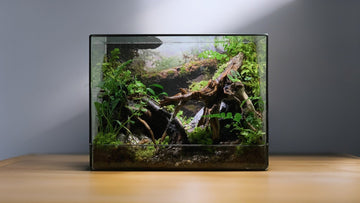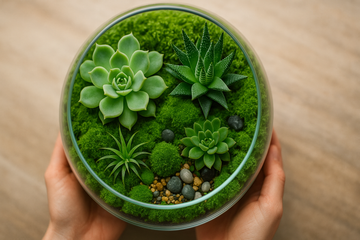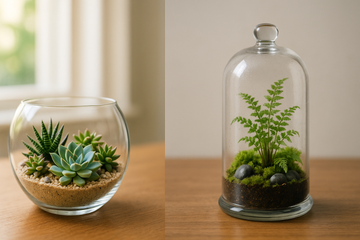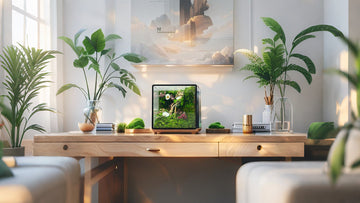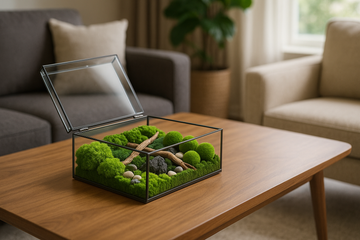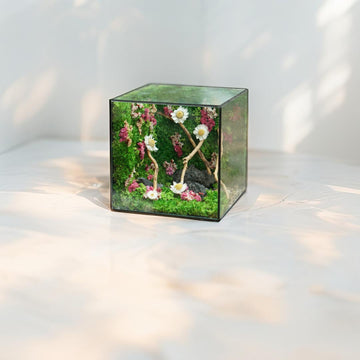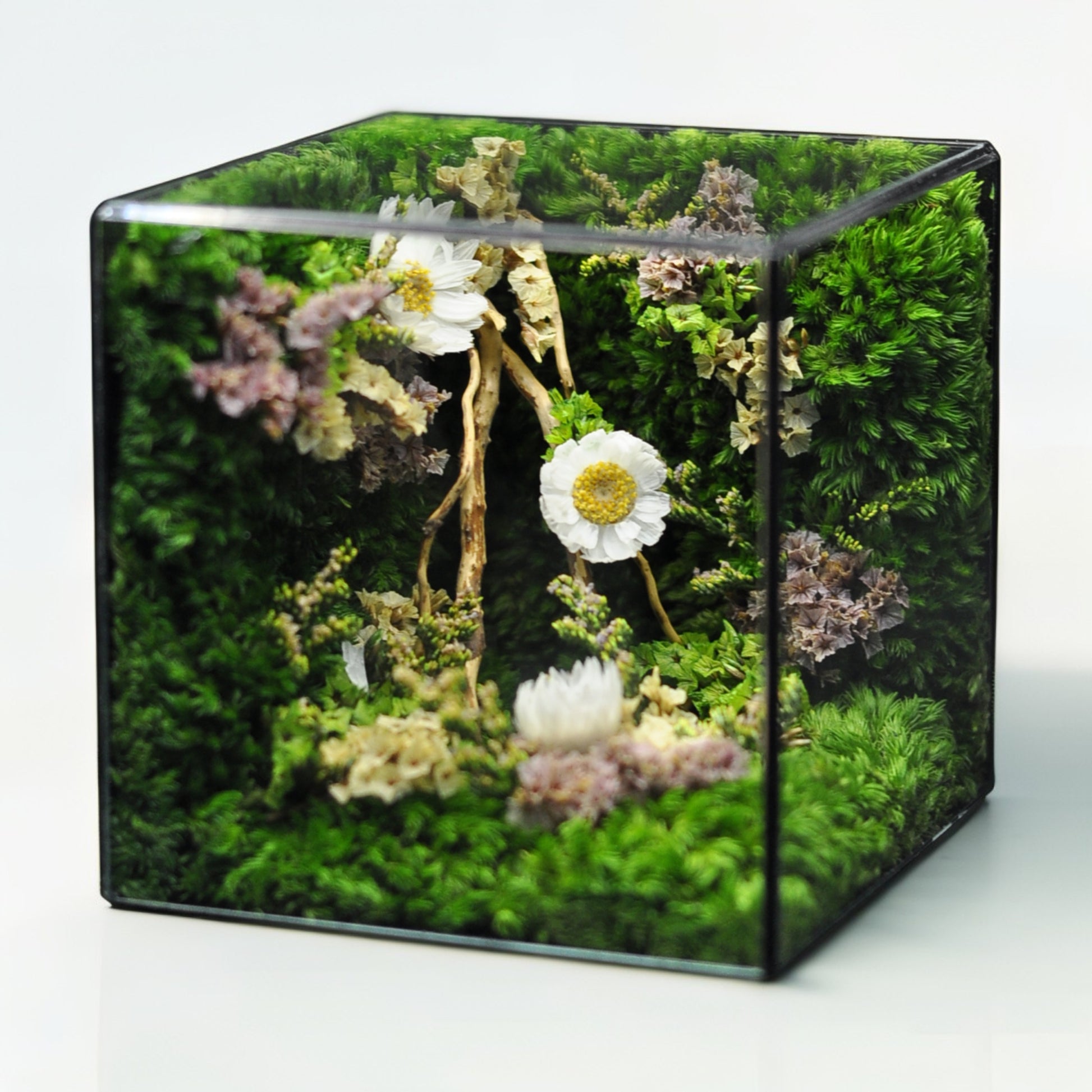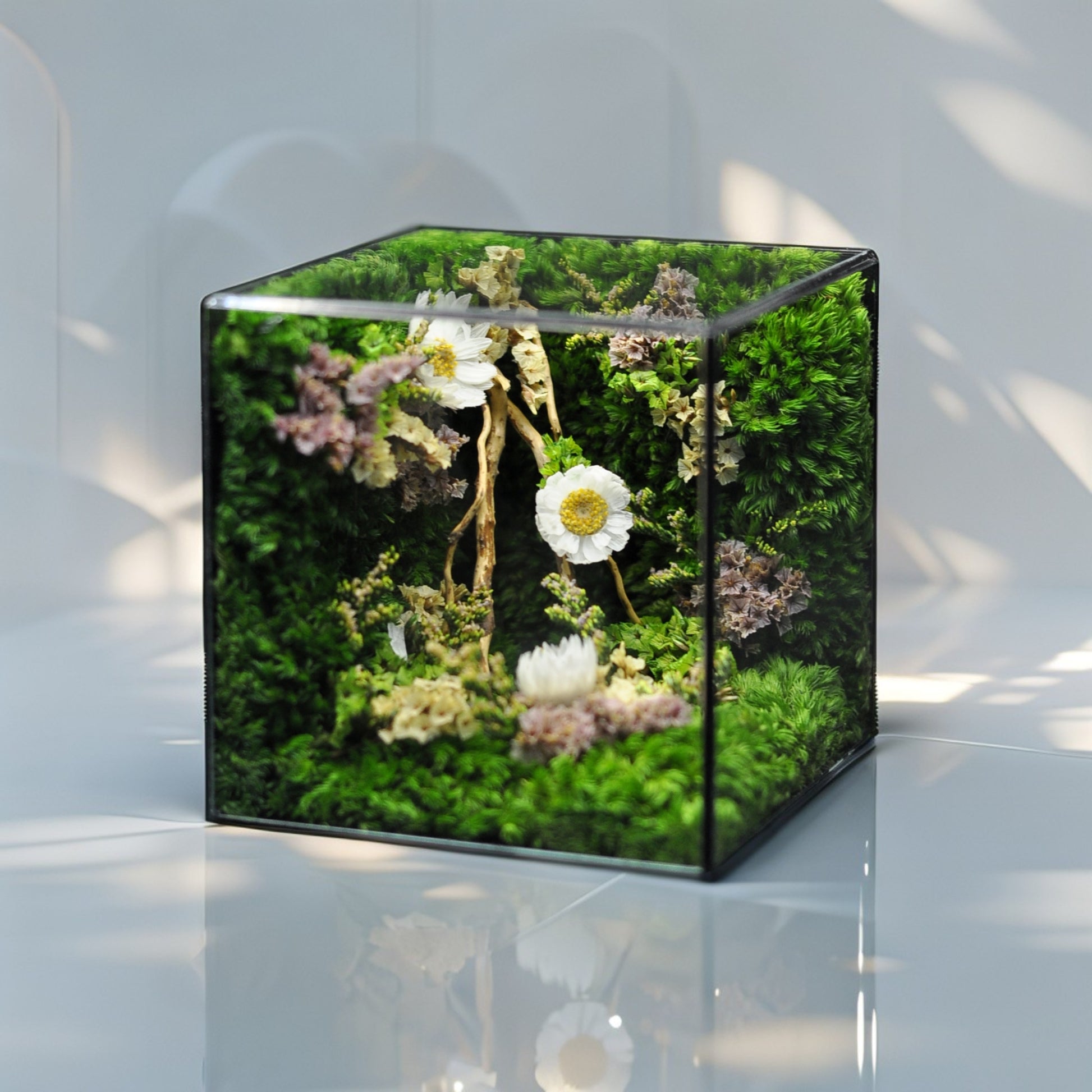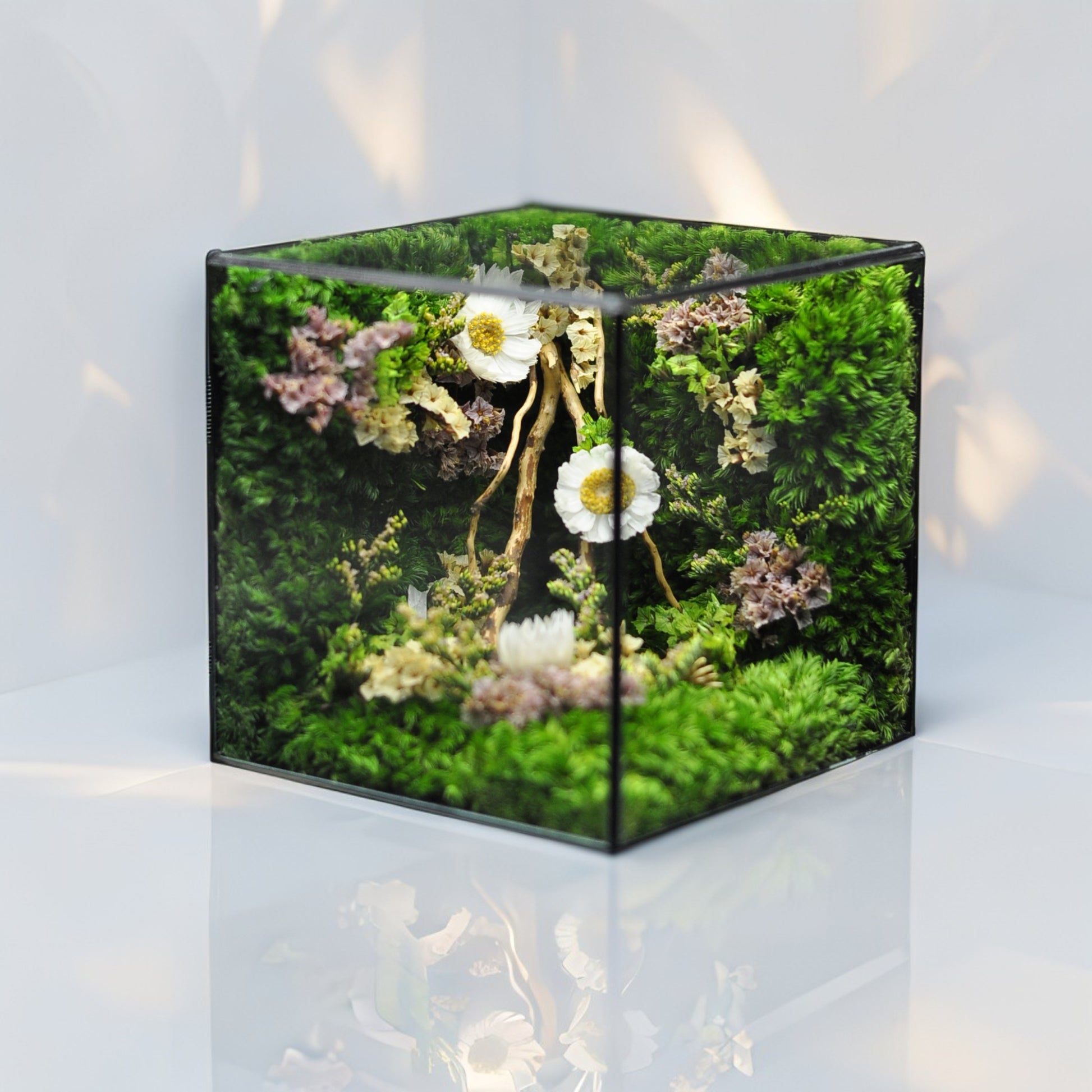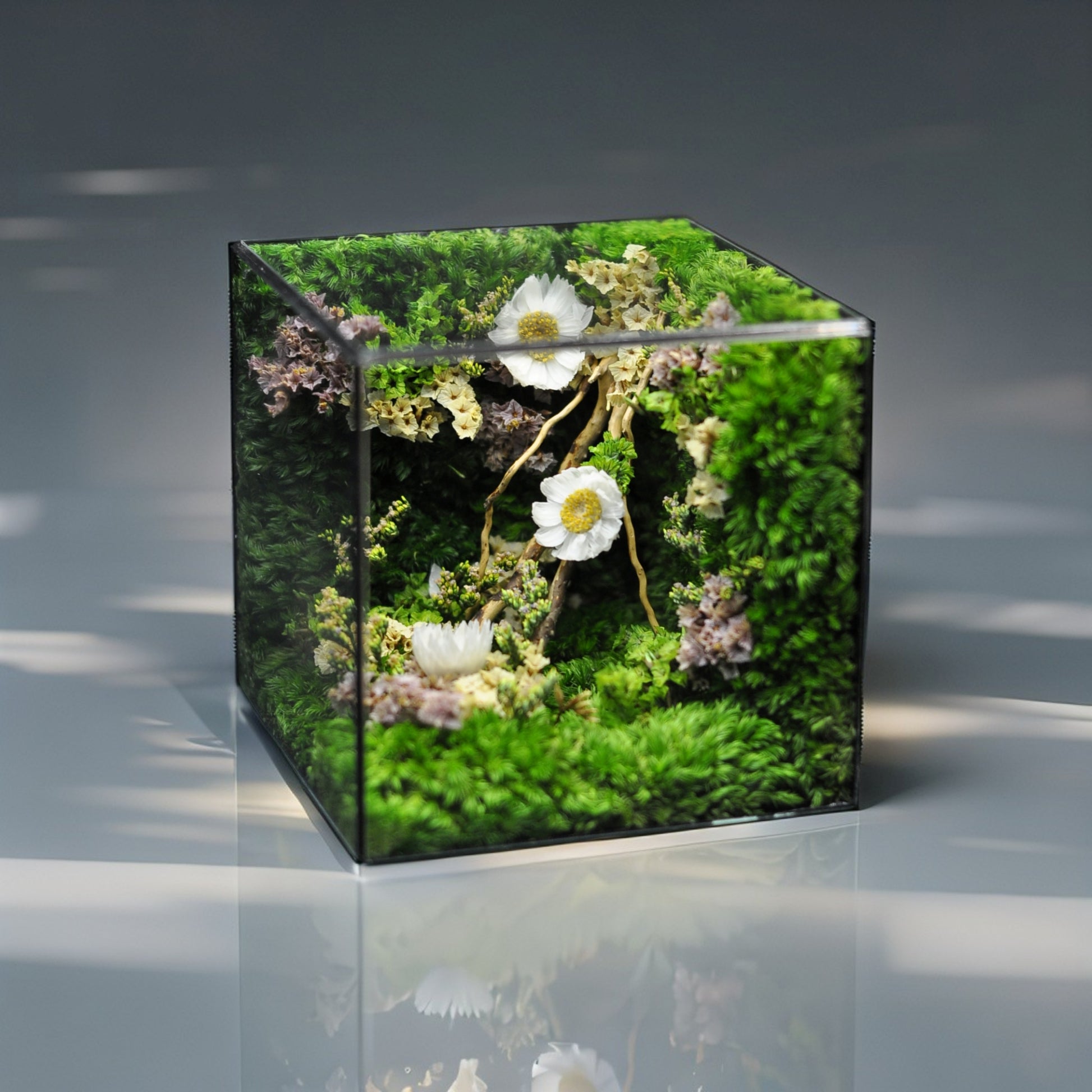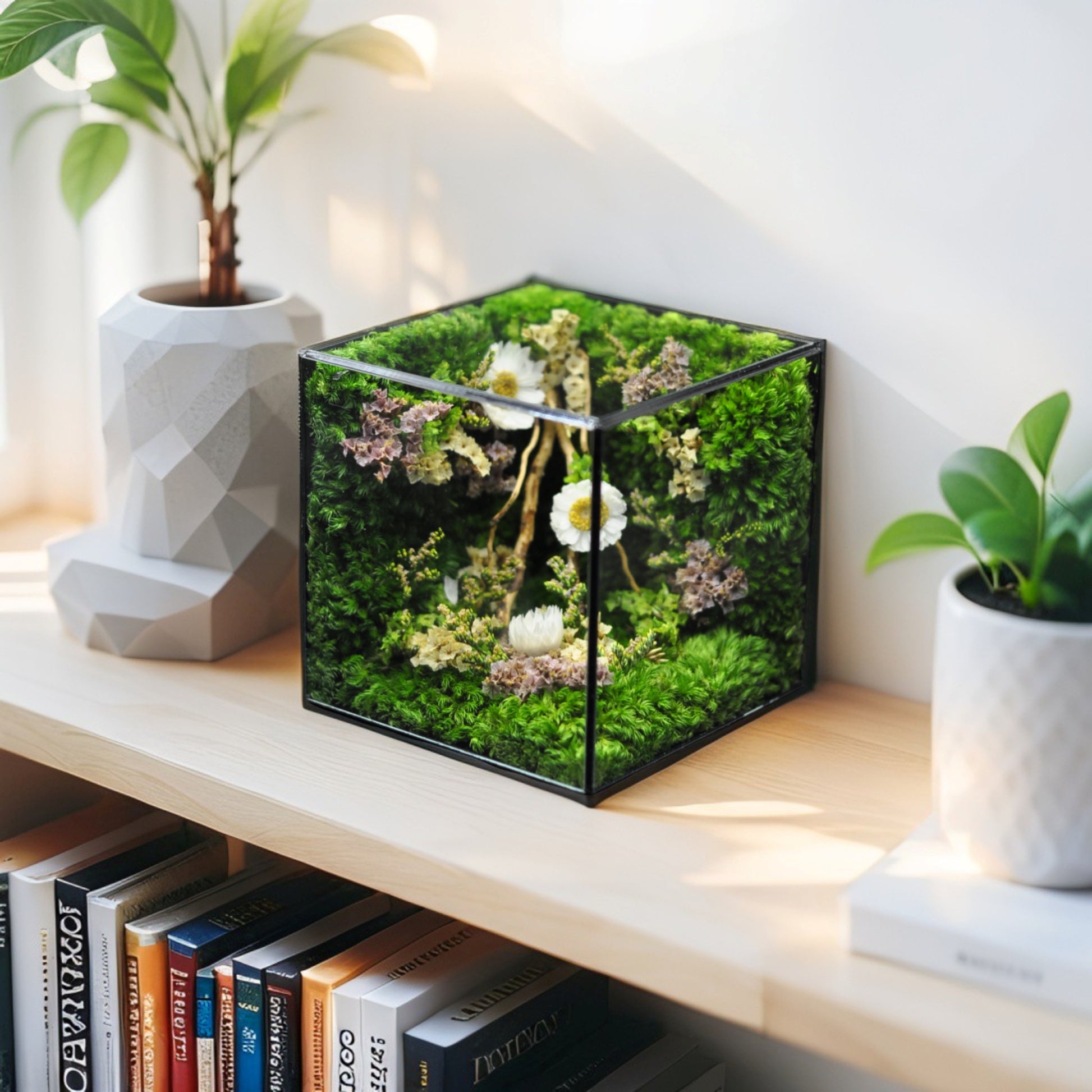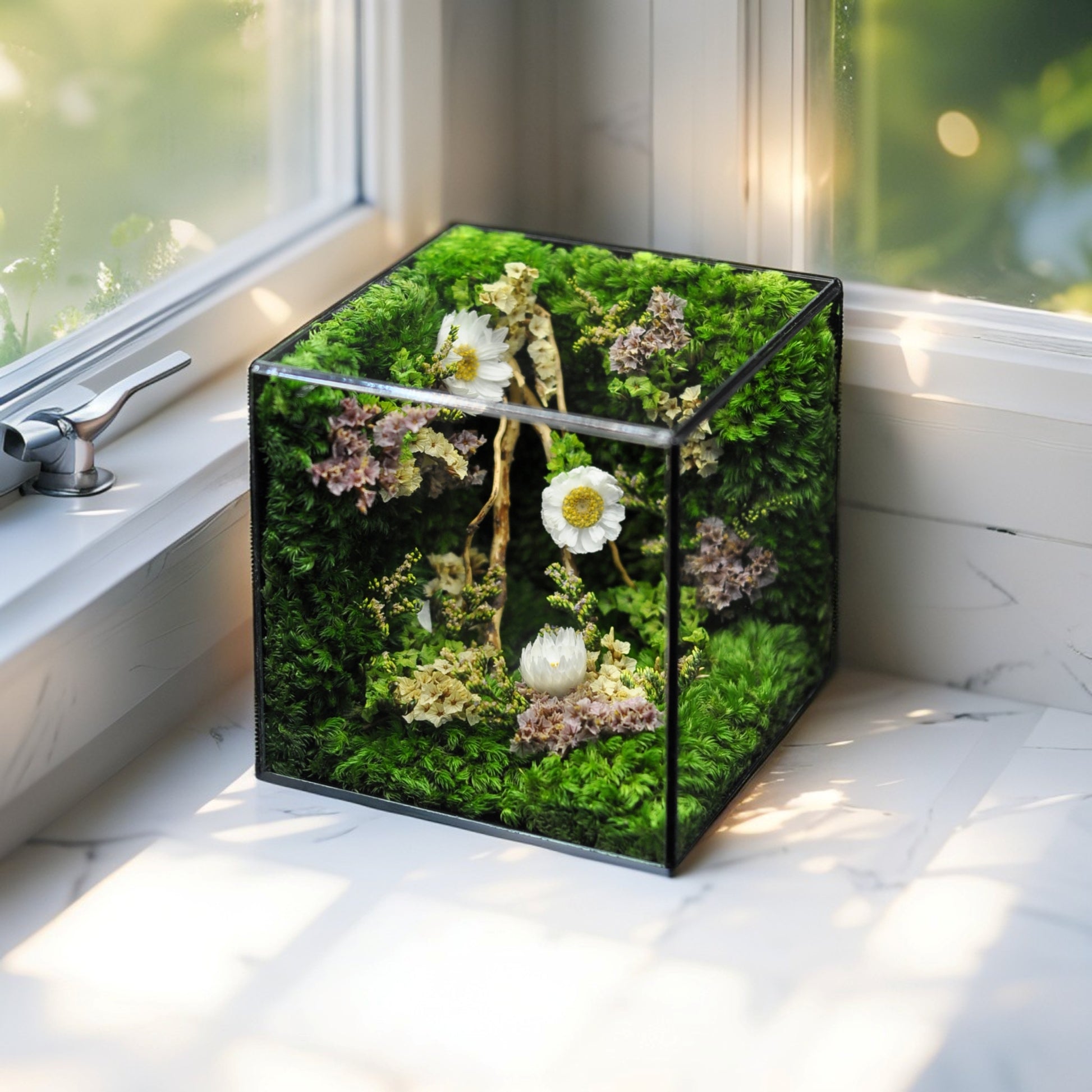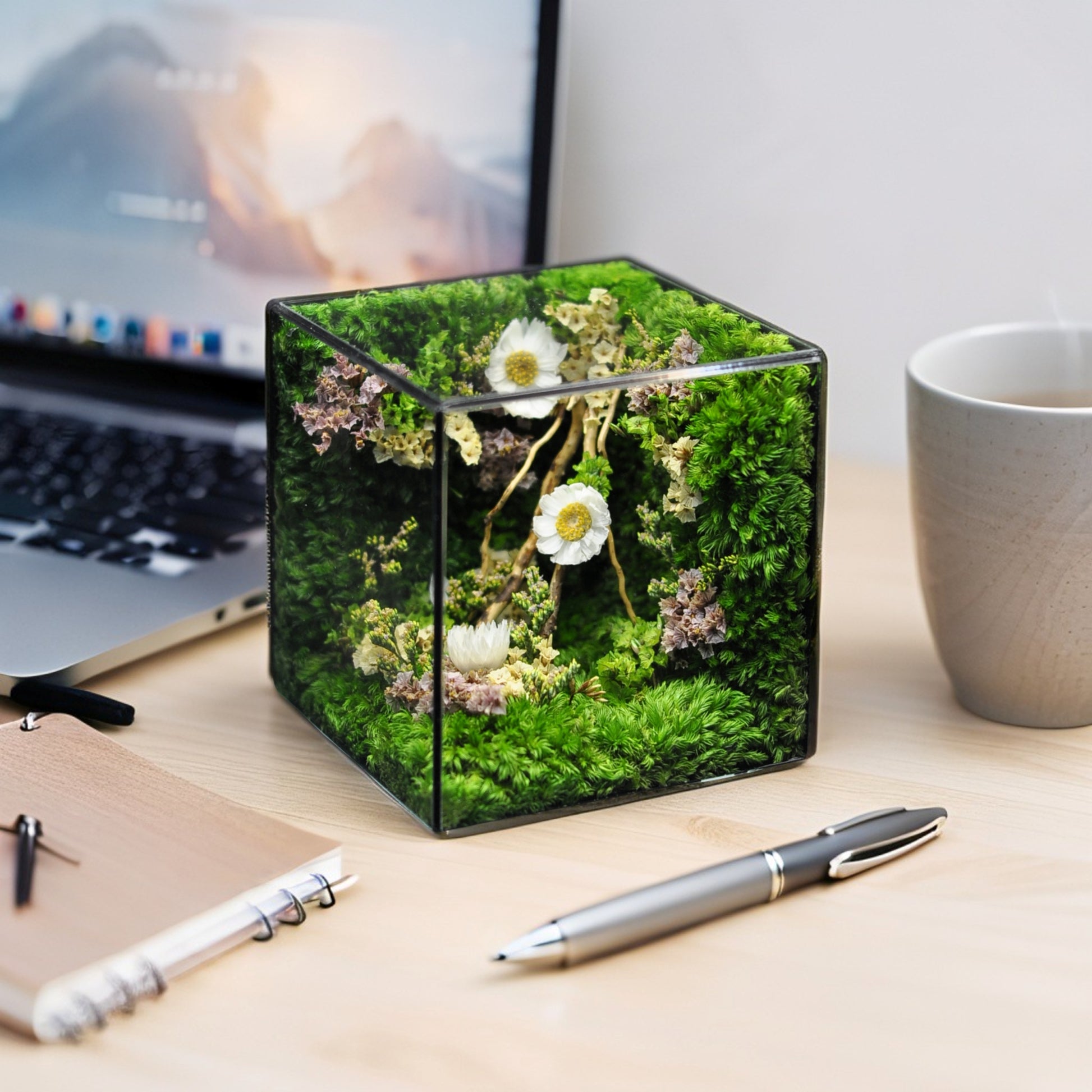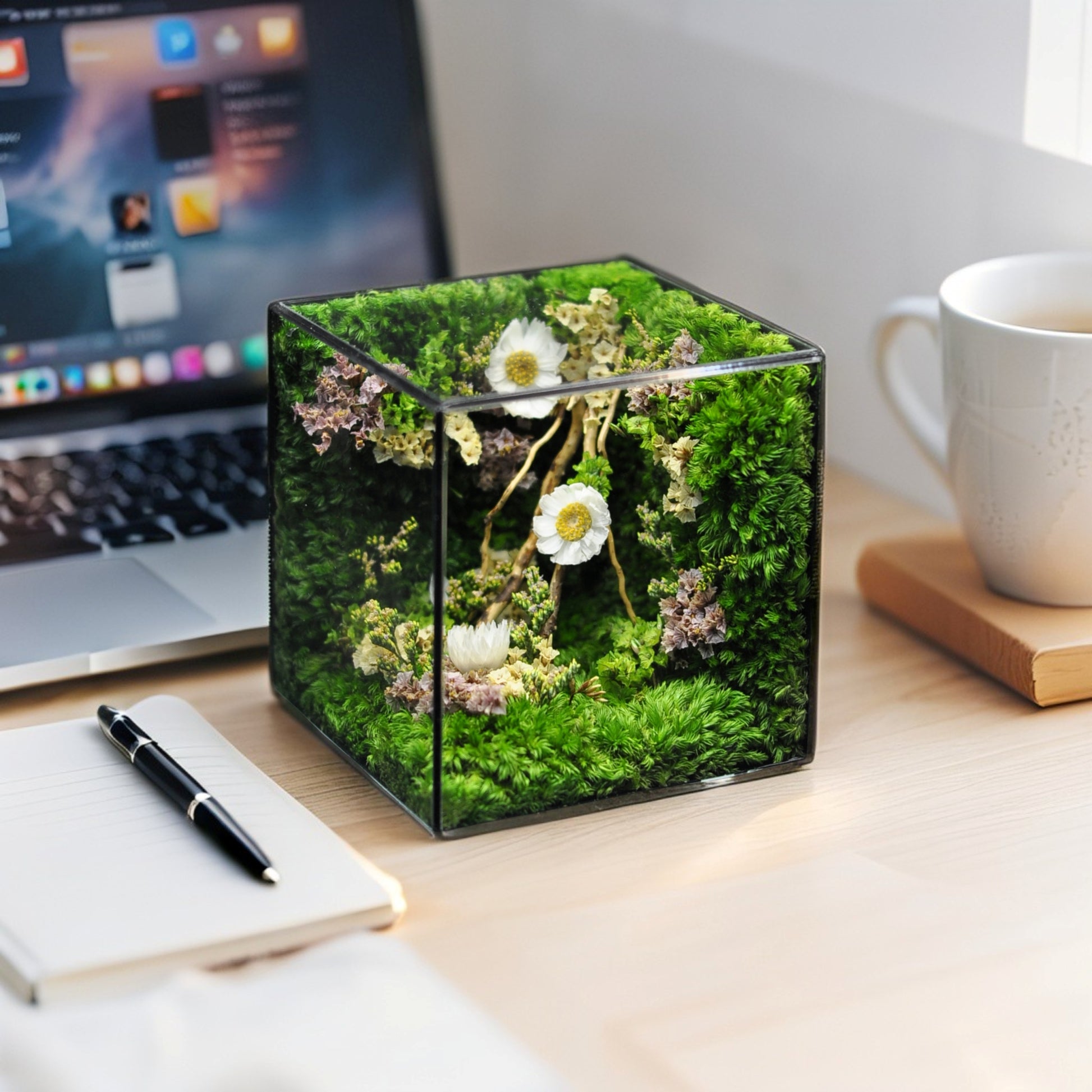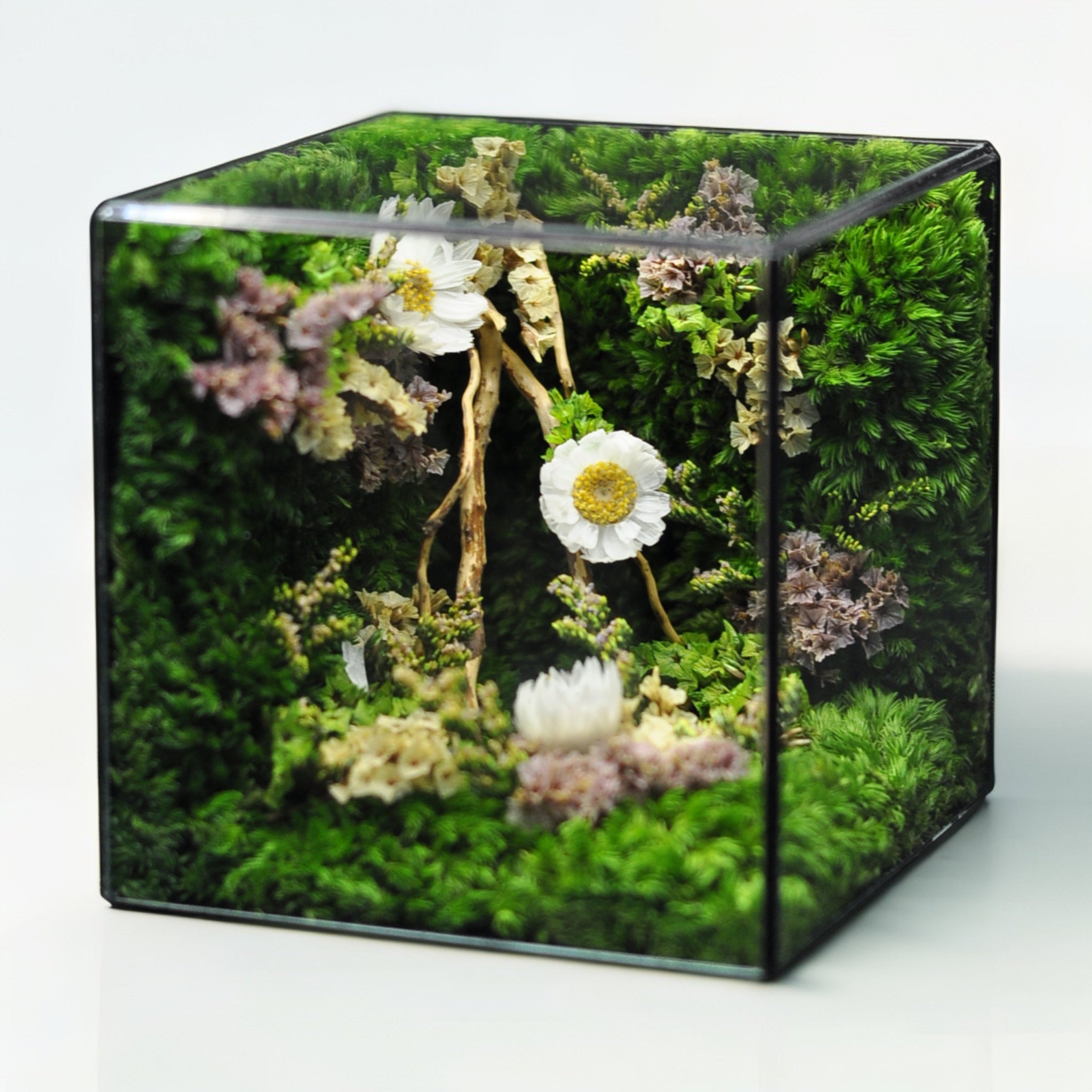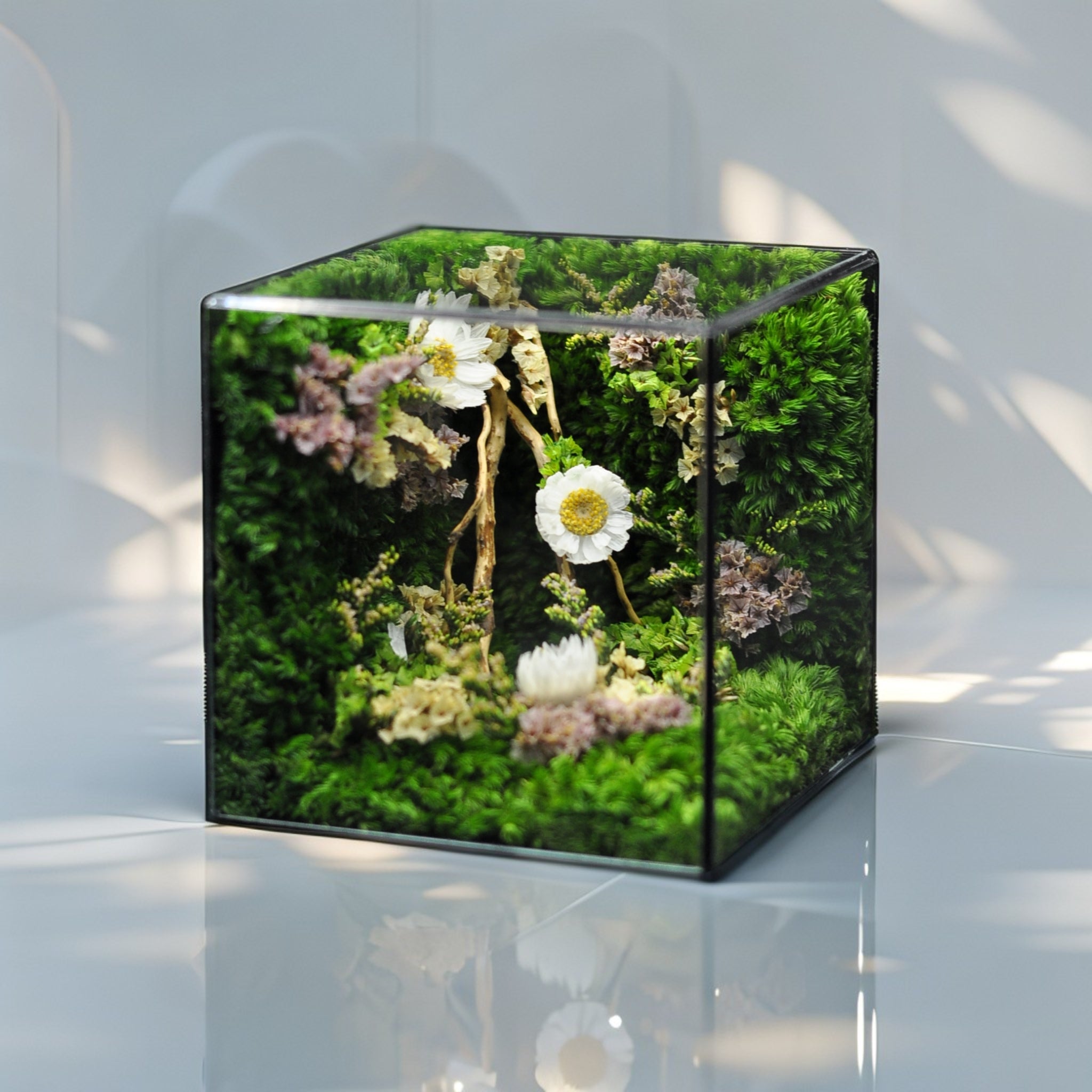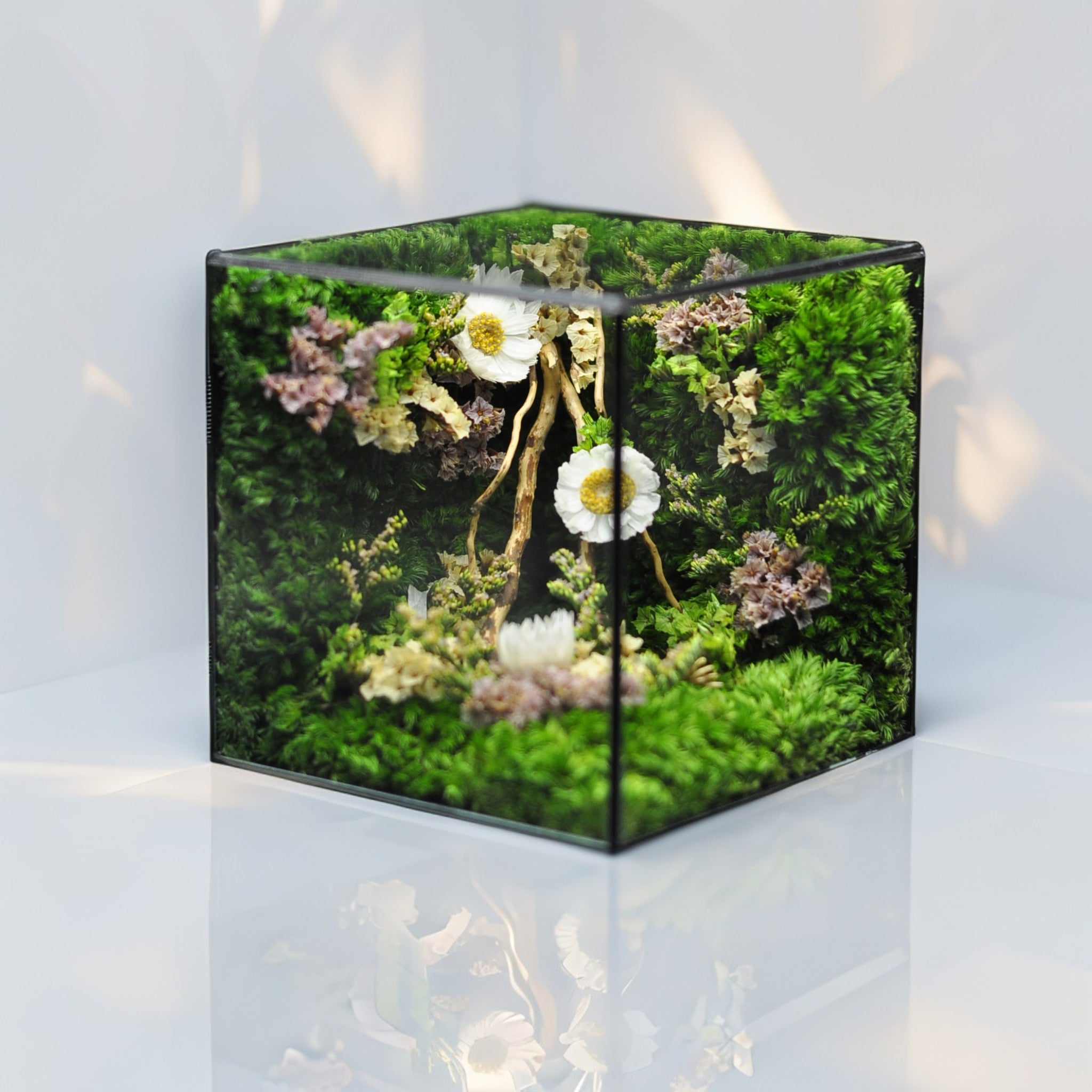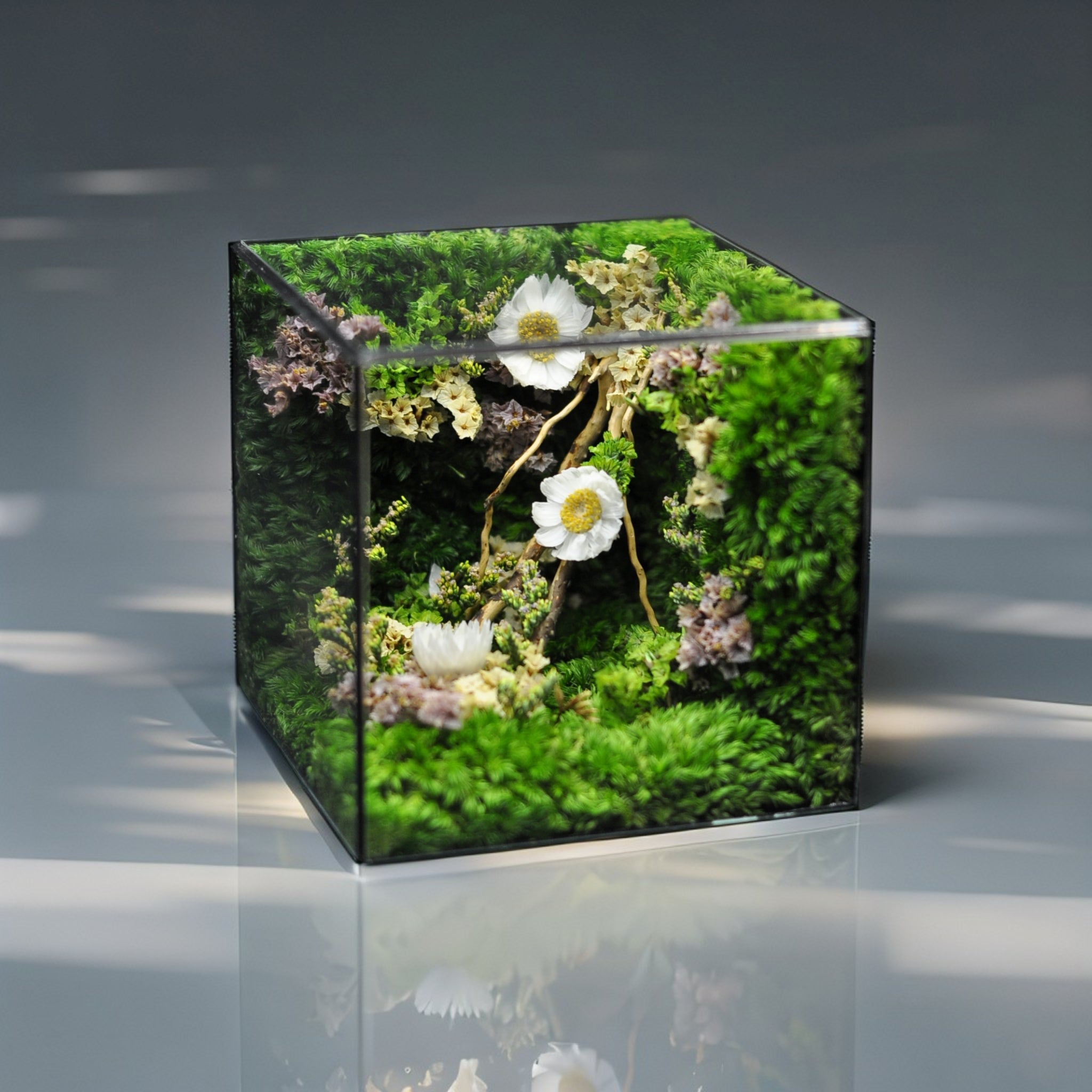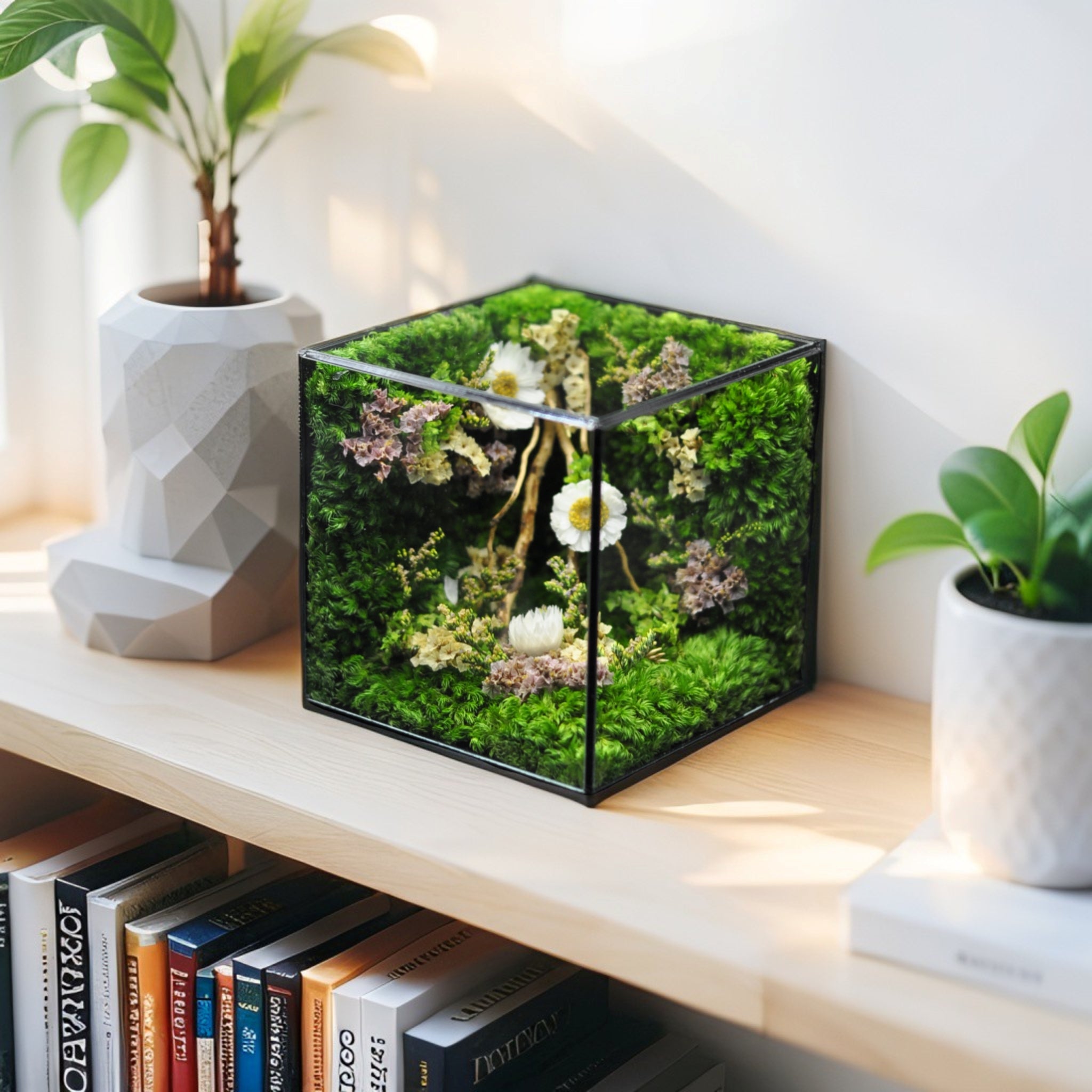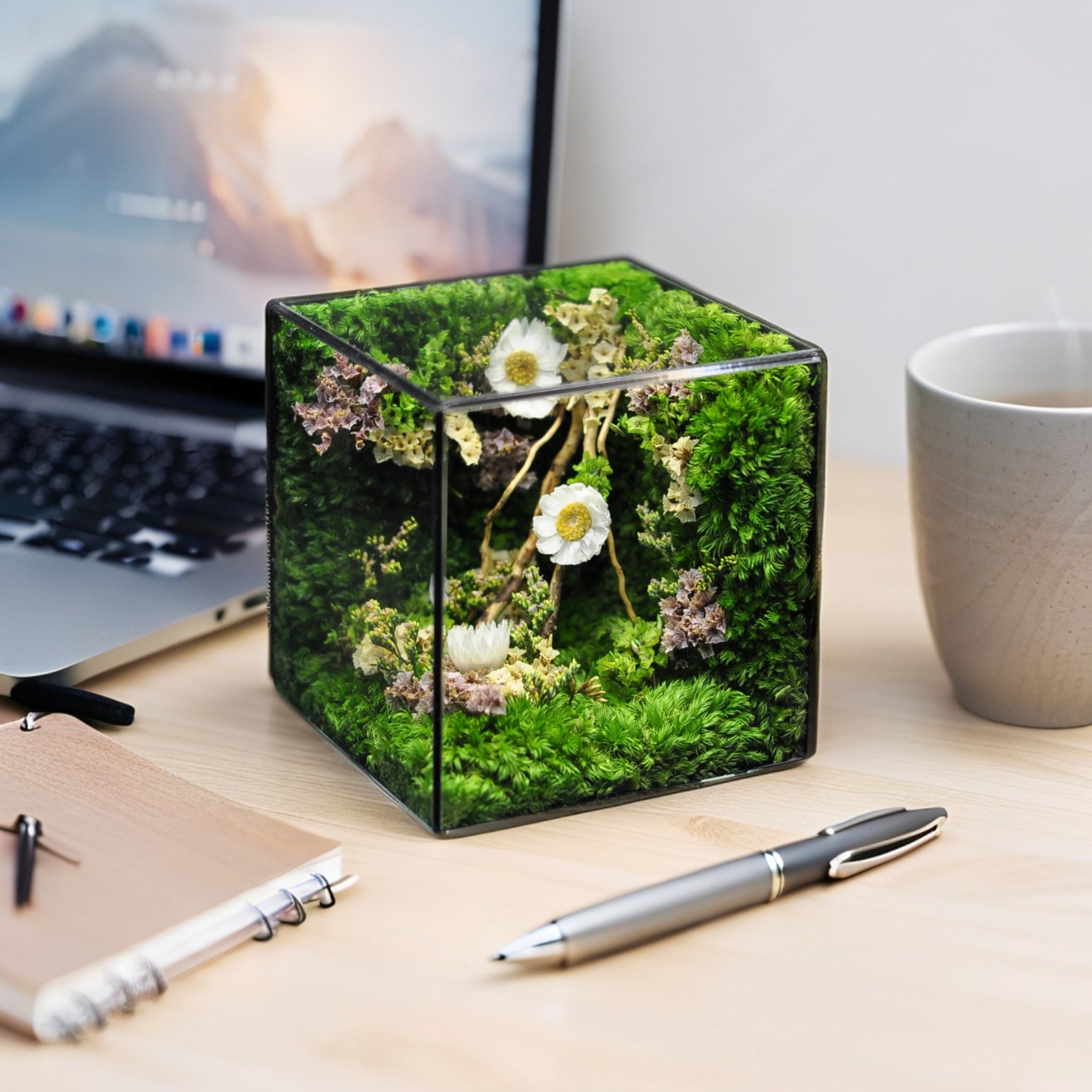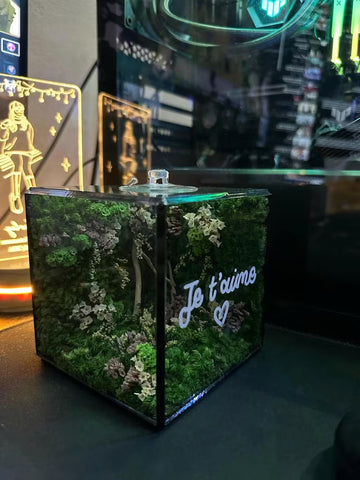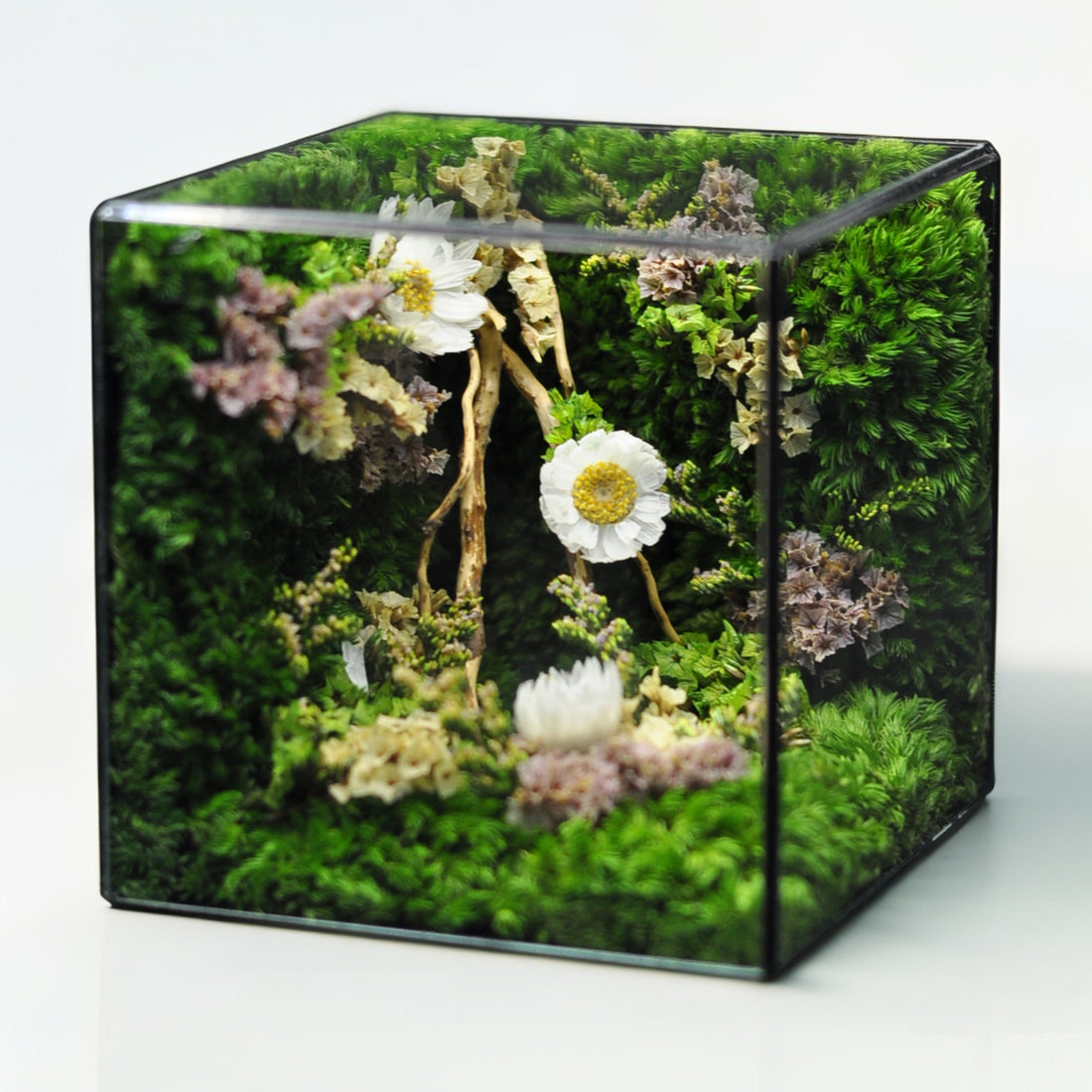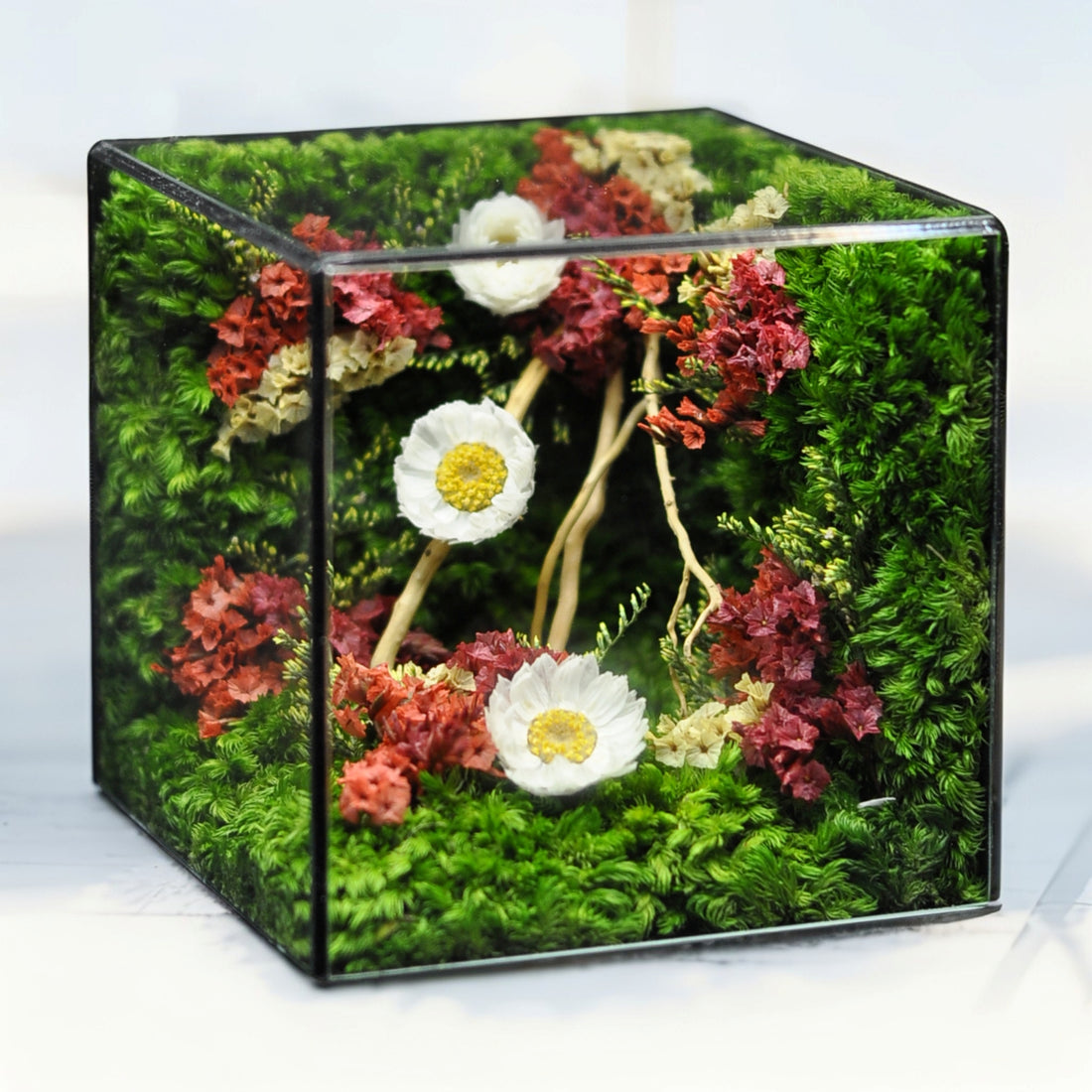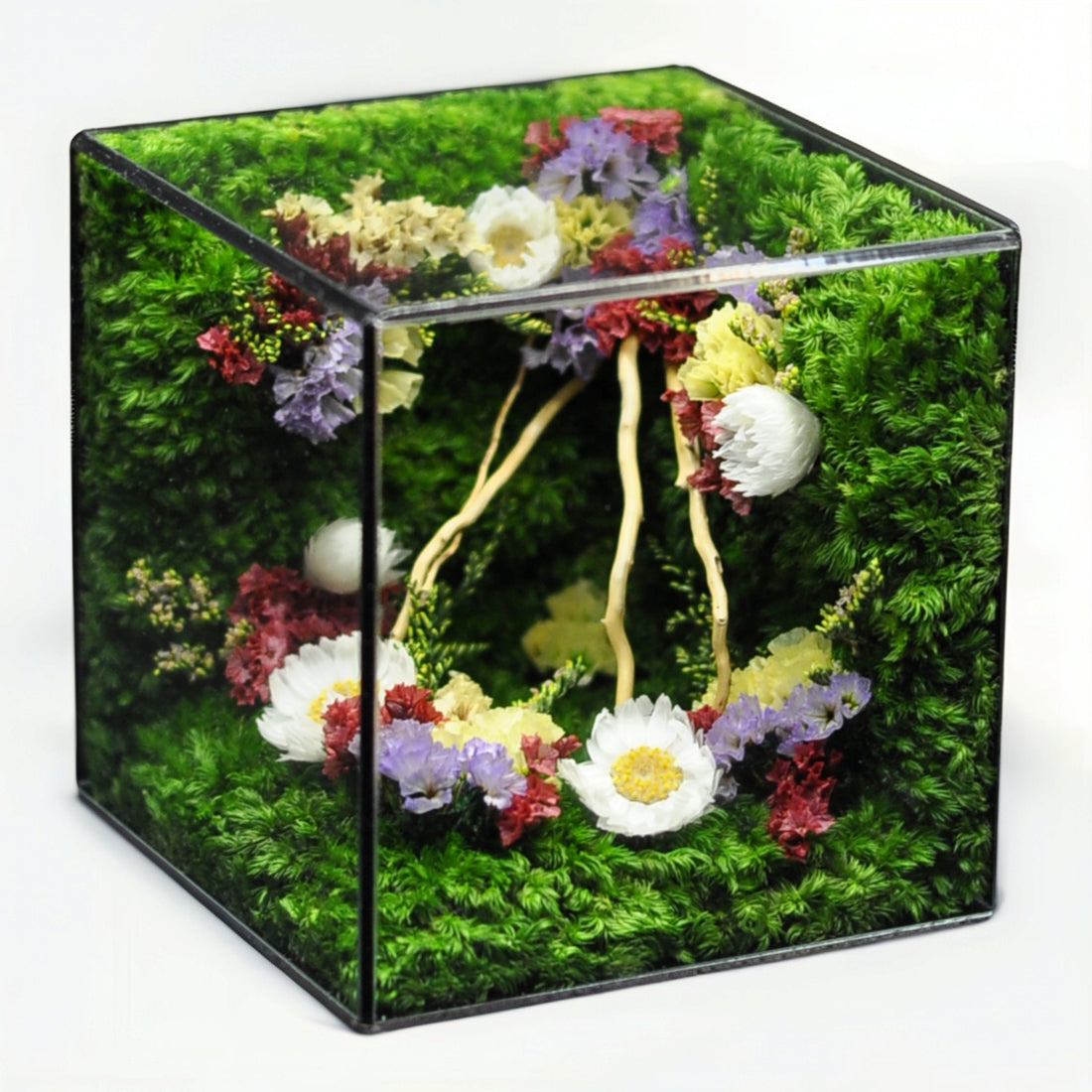Key Takeaways
Large terrariums blend lush greenery with modern design, creating captivating focal points in any room. Understanding the right enclosure style, materials, plant pairings, and decor integration is essential for both aesthetics and plant health. These key takeaways will help you choose, style, and maintain a showstopping large terrarium with confidence.
- Match your large terrarium style to your space: Closed, open or paludarium designs offer distinct humidity levels and visual appeal—pick the format that aligns with your room’s function and décor theme.
- Choose premium materials for lasting clarity and airflow: Opt for tempered glass, corrosion-resistant frames and adjustable vents to ensure crystal-clear views, proper ventilation and long-term durability.
- Select plant combinations for easy upkeep and impact: Pair humidity-loving ferns, mosses and tropical species to create a self-sustaining microclimate that thrives under a simple light and watering regimen.
- Streamline care with proven maintenance protocols: Establish a monitoring routine with scheduled misting, soil checks and strategic light placement to prevent mold, overwatering and plant stress.
- Inspire spaces with styling guides and real-room setups: Go beyond specs by showcasing curated room shots and décor pairings to spark ideas and demonstrate how a large terrarium elevates living rooms, offices or bathrooms.
- Opt for kits or custom builds to suit your expertise: Beginners benefit from all-in-one terrarium kits with step-by-step instructions, while seasoned enthusiasts can commission bespoke enclosures tailored to unique dimensions.
- Buy with confidence from trusted premium suppliers: Source extra large glass terrariums and comprehensive kits from vetted retailers offering clear warranties, detailed specs and reliable after-sales support.
With these takeaways in mind, you’re poised to delve deeper into terrarium types, detailed care routines, styling variations and curated shopping recommendations. Continue reading to transform your space with a stunning large terrarium that thrives beautifully.
Introduction
Imagine a vibrant piece of nature thriving within the confines of your home—a stunning large terrarium that not only captivates the eye but also brings a breath of fresh air into your living space. These living ecosystems are more than just decorative elements; they serve as a harmonious blend of art and nature, providing tranquility and a touch of greenery in any setting.
Understanding how to choose the right enclosure, incorporate appealing plant pairings, and maintain your terrarium can significantly enhance its aesthetic impact and promote plant health. This guide will equip you with essential insights on various terrarium styles, materials, and care routines, empowering you to create a breathtaking focal point that reflects your unique taste and elevates your environment.
Dive in, as we explore the world of large terrariums and discover how to turn your vision into a thriving reality, all while ensuring your indoor oasis flourishes beautifully.
Types and Styles of Large Terrariums
Whether you're a home decor enthusiast or a plant lover, a large terrarium brings a slice of the outdoors into your space. From sealed mini-ecosystems to open-air displays and hybrid paludariums, understanding the different styles will help you choose the ideal setup for your home.
Closed Terrariums: Sealed Ecosystems
Ever wondered why your terrarium rarely needs daily watering? A closed terrarium is a self-regulating sealed ecosystem where water vapor condenses on the walls and drips back into the substrate. Humidity levels remain between 75% and 100%, creating an ideal environment for moisture-loving plants.
- Humidity Self-Regulation: evaporation and condensation cycle
- Ideal Plants: maidenhair ferns, bird’s nest ferns, sheet and cushion mosses
- Maintenance: occasional venting and wall wiping to prevent mold
Industry data suggests a stable, self-regulating environment can reduce watering frequency by up to 50%.
Open Terrariums: Ventilation & Accessibility
Open terrariums feature uncovered tops or large openings, promoting airflow and minimizing fungal growth. They’re perfect for succulents, cacti, and other drought-tolerant species.
- Airflow Benefits: prevents stagnation and mold
- Styling Flexibility: integrate driftwood, pebbles, and layered soils
- Ease of Care: direct watering, straightforward pruning access
Paludarium Designs: Land-Water Hybrid
A paludarium combines terrestrial and aquatic zones in one enclosure, offering a dynamic habitat for both land and water plants.
- Equipment Essentials: submersible pumps (150–200 GPH), canister or internal filters, LED bar lighting (6,000–6,500K) for submerged areas
- Land-Water Integration: mesh barrier separates soil from water reservoir
- Aquatic Plants: Java fern, Anubias, aquatic mosses
- Terrestrial Plants: bromeliads, carnivorous Nepenthes
Paludariums elevate the large terrarium concept with moving water features and diverse flora.
Materials and Design Features
With your preferred terrarium style in mind, let’s examine the materials and design features that ensure durability and functionality.
Choosing the Right Glass: Tempered vs Standard (“large glass terrarium”)
- Low-Iron vs Standard Glass: low-iron glass transmits up to 91–92% of visible light, while standard (annealed) glass offers about 88%
- Tempered Glass: typically two to five times stronger than annealed glass; shatters into pebble-sized fragments for safety
- Standard (Annealed) Glass: excellent clarity but breaks into sharp shards
- Edge Work: beveled edges offer a polished, decorative finish; factory-polished edges are cost-effective and smooth
Investing in low-iron tempered panels enhances light transmission and longevity for an elegant large glass terrarium.
Frame Materials & Ventilation Systems
- Corrosion-Resistant Metals: stainless steel and powder-coated or anodized aluminum frames resist rust and support heavy panels
- Adjustable Vents: slide, rotating, or louvered panels enable precise airflow control
- Sealant Best Practices: use food-grade silicone; ensure surfaces are clean, dry, and residue-free. Allow a minimum 24-hour cure time before adding water or soil
A well-designed frame and ventilation system prevent moisture damage and fungal outbreaks.
Size, Shape, and Layout Considerations
Mini-Checklist for Planning:
- Measure: height, width, door clearances
- Calculate Weight: glass (~10 lb/ft²), substrate (~50 lb/ft³), water (~8.34 lb/gal)
- Confirm Support: ensure stands or cabinets can bear the load
- Plan Clearance: leave at least 12" on all sides for maintenance access
Choose from rectangles, hexagons, or geodesic domes to match your space and style.
Plant Selection and Arrangement
With a sturdy terrarium in place, it’s time to bring in the plants that will thrive and impress.
Best Plants for a Large Terrarium: Ferns, Mosses & Tropicals (“what plants are best for a large terrarium?”)
- Humidity-Loving Species: maidenhair ferns, bird’s nest ferns, Pilea, Fittonia
- Mosses: sheet and cushion varieties create lush emerald carpets
- Open-Design Succulents: Echeveria, Haworthia
Creating a Self-Sustaining Microclimate
Layer your substrate for optimal drainage and nutrient cycling:
- Drainage: 1–2" of pumice or LECA
- Activated Charcoal: ½", filters water and odors
- Sphagnum Moss: 1", retains extra moisture
- Growth Medium: peat, perlite, and orchid bark mix
- Topsoil: fine, nutrient-rich blend
Industry data suggests a 2" charcoal layer can reduce root rot incidents by around 30%.
Styling with Indoor Plant Decor
Styling your terrarium is where science meets art:
- Layering Textures: pair glossy leaves with soft moss pillows
- Height Variation: place taller specimens at the back or center
- Focal Points: feature driftwood or a showy bromeliad
- Color Harmony: match frame finishes to furniture accents—imagine a geodesic dome terrarium atop a mid-century teak credenza
Maintenance and Care Protocols
Keeping your terrarium healthy requires understanding its unique micro-ecosystem.
How to Care for a Large Terrarium: Watering & Humidity Control (“how to care for a large terrarium”)
Ever noticed condensation pooling at the corners overnight? Proper misting and monitoring keep moisture in balance.
- Misting: twice weekly for closed, once weekly for open terrariums
- Condensation Management: wipe excess water to prevent mold
- Monitoring: use a digital hygrometer; aim for 70–90% RH in closed setups
Lighting Strategies: Natural vs Artificial
- Natural Light: indirect, east- or north-facing windows
- LED Grow Lights: 6,000–6,500K spectrum, 1,000–1,500 lumens per sq ft (PAR ~200–400 µmol/m²/s), 12–14 hours/day
- Photoperiod: maintain 10–12 hours of light followed by 12–14 hours of darkness
Troubleshooting Common Issues: Mold, Overwatering & Pests
- Mold: increase ventilation, reduce misting
- Overwatering: allow substrate to dry for 24–48 hours; prune rotted roots
- Pests: inspect weekly; treat with insecticidal soap
Quick-Fix Checklist for Dead Spots:
- Check Light Coverage: reposition or add LED fixtures
- Test Soil Compaction: aerate compacted pockets
- Rotate Plants: adjust placements monthly to ensure even growth
Styling Inspirations and Real-Room Setups
To spark ideas, here are styling inspirations for various rooms.
Living Room Focal Points: Modern & Minimalist Styles
In a modern minimalist living room, a large terrarium adds organic warmth without clutter. Position a closed system with ferns and moss on a floating shelf; coordinate frame color with neutral furniture.
Office & Bathroom Terrarium Ideas
- Bathroom Paludarium: high ambient humidity suits sealed paludariums featuring tropical bromeliads and waterfall features
- Office Open Terrarium: succulents in an open-air design bring low-maintenance greenery to your desk or bookshelf
Photo Gallery: Curated Room Shots for Inspiration
[Insert image: Modern minimalist living room]
[Insert image: Boho office nook with open terrarium]
[Insert image: Spa-like bathroom paludarium]
Having seen real-room examples, let’s explore how you can easily acquire your own setup.
Kits vs Custom Builds: Choosing Your Path
Whether you’re a novice or a seasoned hobbyist, you can opt for a kit or a custom build.
Best Large Terrarium Kits for Beginners (“large terrarium kit”, “best large terrarium kits for beginners”)
- Urban Jungle Pro Kit (48"x24"x24"): modular panels, three-layer substrate system, and LED starter light
- GreenScape Deluxe Glass Terrarium Kit (36"x12"x12"): tempered panels, activated charcoal, decorative pebbles
- BioBloom Complete Terrarium Starter Kit: curated plant pack, humidity dome, tools, and step-by-step guide
Custom Terrarium Builds: Advanced Features & Dimensions
Custom builds offer tailored dimensions, thicker glass, reinforced frames, multi-zone lighting, and climate controls. Professional installation ensures waterproofing and structural integrity.
Step-by-Step Setup Process
- Unboxing: inspect glass panels, frames, and accessories
- Assembly: seal joints with food-grade silicone; allow 24 hours to cure
Common Pitfall: incorrect layer order can lead to stagnant water—follow layering instructions precisely - Planting: add substrate layers and arrange plants according to light and humidity needs
- First-Month Care: monitor humidity, adjust lighting schedules, and track plant growth weekly
Premium Buying Guide and Supplier Recommendations
Where to Buy Extra Large Terrariums Online (“extra large terrarium”, “where to buy extra large terrariums online”)
Top online retailers offering reliable service and premium options:
- TerrariumSupplyCo.com: custom shipping crates, 5-year frame warranty, live expert chat
- GreenScapeDesigns.com: ISO 9001-certified manufacturing, CE- and UL-rated vents, replacement parts on demand
Evaluating Quality: Specs, Clarity & After-Sales Support
- Light Transmission: ≥92% for low-iron glass
- Manufacturer Credentials: sourced from ISO 9001-certified facilities
- Vents and Fixtures: CE- and UL-rated for safety
- Support Services: installation guides, troubleshooting resources, part replacements
Budgeting for Your Terrarium: Kits vs Custom Costs
- Kits: $200–$500 for large terrarium kits
- Custom Builds: $1,500–$5,000 depending on features
- Total Cost of Ownership: include lighting, substrate replacements, and periodic plant refreshes
Case Studies & E-E-A-T Enhancements
Beginner’s Success Story: Kit Build Transformation
Jessica M. from Seattle assembled a 48"x24"x24" kit in a weekend. “Assembly was straightforward, and my maidenhair ferns thrived,” she says. Before/after photos show a 20% increase in plant coverage over four months.
Mid-Level DIY Terrarium Project: Aquarium Conversion
David L. from Chicago converted a 40-gallon aquarium into a terrarium. He installed a 150 GPH submersible pump and DIY LED strips. His philodendrons grew at 1.5 cm per week with no mold issues, proving resourceful repurposing can yield professional results.
High-End Custom Paludarium Project: Design & Results
A London design studio built a 2-meter paludarium featuring cascading water and rare aquatic species. Measurements over six months: Java fern growth averaged 2 cm/week; water pH stabilized at 6.8–7.0. Dr. Elena Gomez, Plant Biologist, notes: “The integrated water feature enhances biophilic design while maintaining ecological balance.”
Data & Evidence: Longevity, Growth Rates & Satisfaction
A survey of 150 terrarium owners reveals:
- 85% satisfaction with kit ease-of-use
- 70% of custom-build clients report a ≥2% increase in property value
- Transitioning from open to closed systems yields an average 30% improvement in growth rates, according to academic studies
These metrics underscore the transformative impact of well-chosen large terrariums for home and office.
Conclusion
Large terrariums offer a captivating blend of aesthetic appeal and ecological function, allowing anyone from plant enthusiasts to home decorators to cultivate vibrant indoor ecosystems. Whether choosing a closed terrarium for moisture-loving plants, an open design for succulents, or a paludarium that integrates land and water features, understanding the behavioral dynamics of each type enhances the selection process and promotes sustainable care.
The materials and thoughtful design considerations, as detailed throughout the article, underpin the durability and functionality of your terrarium. From selecting the right glass to facilitating airflow through effective ventilation systems, these elements play a crucial role in creating a flourishing environment. As evidenced by real-world examples and data, investing in a well-constructed terrarium can lead to increased plant growth and satisfaction, confirming its value for both decorative and biophilic purposes.
Looking forward, as you contemplate which terrarium style best suits your space and aesthetic, consider not only the immediate visual appeal but also the long-term maintenance and growth potential of your chosen plants. Taking deliberate steps towards setup and care will not only enhance your indoor environment but also foster a rewarding, green journey within the comforts of your home.
Frequently Asked Questions (FAQ)
Q: How do I care for a large terrarium?
A: Care involves misting twice weekly for closed terrariums and once weekly for open designs, wiping excess condensation to prevent mold, and using a digital hygrometer to maintain 70–90% relative humidity in closed setups.
Q: What plants are best for a large terrarium?
A: Humidity-loving species like maidenhair and bird’s nest ferns, Pilea, and Fittonia; sheet and cushion mosses for lush carpets; and for open-air designs, drought-tolerant succulents such as Echeveria and Haworthia.
Q: Where can I buy high-quality large terrariums online?
A: Top online retailers include TerrariumSupplyCo.com (offering custom shipping crates and a 5-year frame warranty) and GreenScapeDesigns.com (ISO 9001-certified manufacturing, CE- and UL-rated vents, and on-demand replacement parts).
Q: What is the difference between closed and open terrariums?
A: Closed terrariums are sealed ecosystems with 75–100% humidity via natural evaporation and condensation, ideal for moisture-loving plants and requiring only occasional venting and wall wiping. Open terrariums have uncovered tops or large openings for airflow, reducing mold risk and suiting succulents and cacti with direct watering and easy pruning access.
Q: What materials should I consider for a durable large glass terrarium?
A: Opt for low-iron tempered glass panels (91–92% light transmission, 2–5× stronger), corrosion-resistant metal frames (stainless steel or powder-coated aluminum), adjustable vents for precise airflow, and seal all joints with food-grade silicone allowed to cure for at least 24 hours.
Q: How do I layer substrate for a self-sustaining terrarium microclimate?
A: Start with 1–2″ of pumice or LECA for drainage, add ½″ of activated charcoal to filter water and odors, layer 1″ of sphagnum moss to retain moisture, follow with a mix of peat, perlite, and orchid bark as the growth medium, and finish with fine, nutrient-rich topsoil.
Q: What is a paludarium and which plants thrive in it?
A: A paludarium is a land-water hybrid terrarium using a mesh barrier to separate soil from a water reservoir; it requires submersible pumps (150–200 GPH), filters, and 6,000–6,500 K LED lighting. Aquatic plants such as Java fern, Anubias, and aquatic mosses coexist with terrestrial species like bromeliads and carnivorous Nepenthes.

